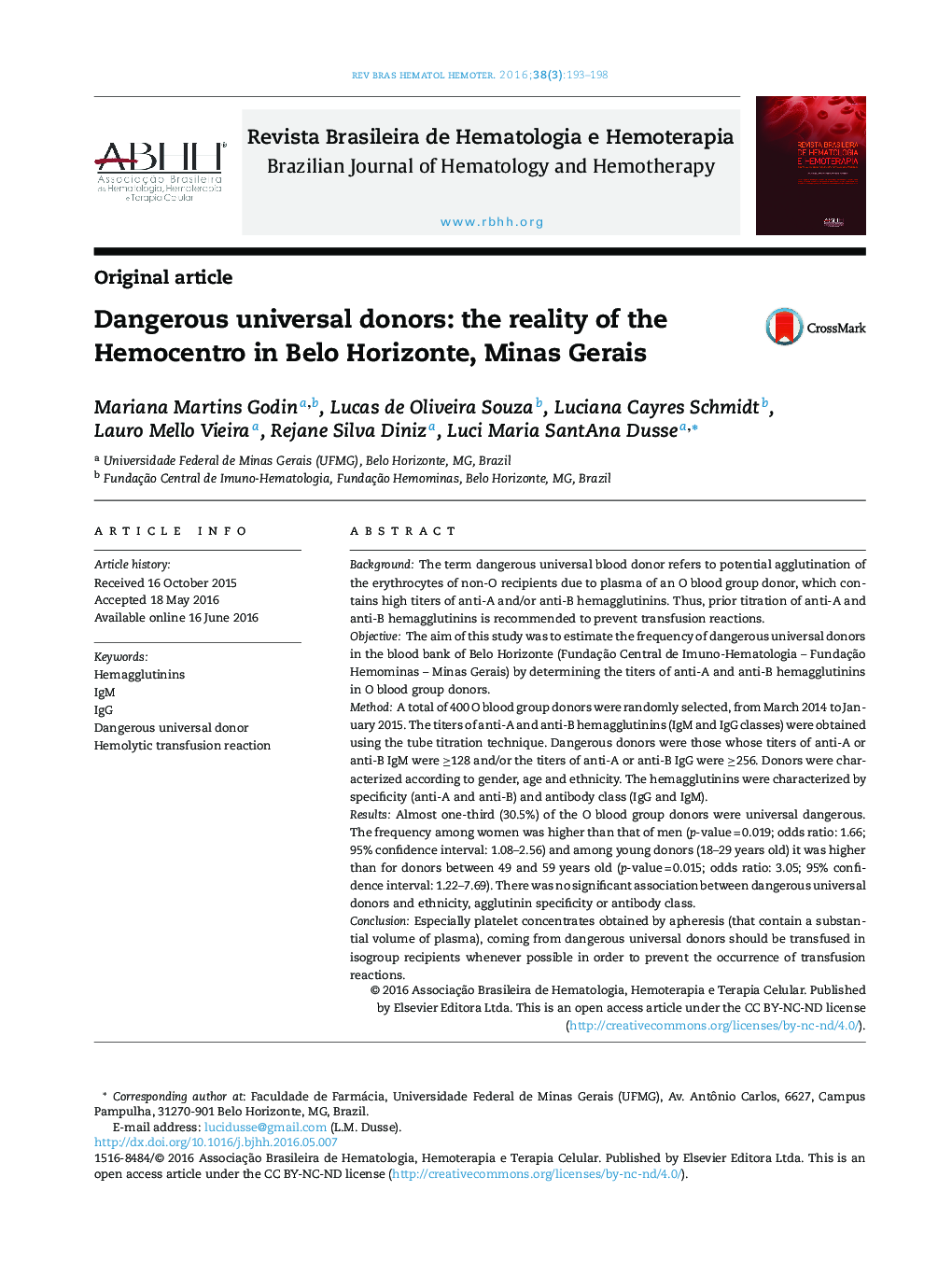| کد مقاله | کد نشریه | سال انتشار | مقاله انگلیسی | نسخه تمام متن |
|---|---|---|---|---|
| 3332891 | 1590962 | 2016 | 6 صفحه PDF | دانلود رایگان |

BackgroundThe term dangerous universal blood donor refers to potential agglutination of the erythrocytes of non-O recipients due to plasma of an O blood group donor, which contains high titers of anti-A and/or anti-B hemagglutinins. Thus, prior titration of anti-A and anti-B hemagglutinins is recommended to prevent transfusion reactions.ObjectiveThe aim of this study was to estimate the frequency of dangerous universal donors in the blood bank of Belo Horizonte (Fundação Central de Imuno-Hematologia – Fundação Hemominas – Minas Gerais) by determining the titers of anti-A and anti-B hemagglutinins in O blood group donors.MethodA total of 400 O blood group donors were randomly selected, from March 2014 to January 2015. The titers of anti-A and anti-B hemagglutinins (IgM and IgG classes) were obtained using the tube titration technique. Dangerous donors were those whose titers of anti-A or anti-B IgM were ≥128 and/or the titers of anti-A or anti-B IgG were ≥256. Donors were characterized according to gender, age and ethnicity. The hemagglutinins were characterized by specificity (anti-A and anti-B) and antibody class (IgG and IgM).ResultsAlmost one-third (30.5%) of the O blood group donors were universal dangerous. The frequency among women was higher than that of men (p-value = 0.019; odds ratio: 1.66; 95% confidence interval: 1.08–2.56) and among young donors (18–29 years old) it was higher than for donors between 49 and 59 years old (p-value = 0.015; odds ratio: 3.05; 95% confidence interval: 1.22–7.69). There was no significant association between dangerous universal donors and ethnicity, agglutinin specificity or antibody class.ConclusionEspecially platelet concentrates obtained by apheresis (that contain a substantial volume of plasma), coming from dangerous universal donors should be transfused in isogroup recipients whenever possible in order to prevent the occurrence of transfusion reactions.
Journal: Revista Brasileira de Hematologia e Hemoterapia - Volume 38, Issue 3, July–September 2016, Pages 193–198